In order to generate a more inclusive dataset of Pseudomonas genes mapped to putative in-paralogs and putative orthologs in other Pseudomonas species/strains, we developed a Pseudomonas Orthologous Groups classification system.
To generate ortholog groups, pair-wise DIAMOND searches were run on all genomes in the database to find reciprocal best hits (RBHs) for each gene. These analyses often resulted in multiple candidate genes for RBH status, which were narrowed down by examining the similarity between the query's flanking genes and the hit's flanking genes. If two candidate genes were directly adjacent, they where both accepted as RBHs that involve putative in-parology.
Pairwise intra-genome DIAMOND searches were also performed to acquire in-paralog information (i.e. gene duplications occurring after species divergence). If two genes in one genome were reciprocally more similar to each other than to any gene in the other genomes, the two genes were designated putative in-paralogs. Ortholog groups are built by starting with a seed gene and then adding all genes to which there is a RBH or in-paralog relationship.
Every new gene added to an ortholog group was then treated as a seed gene and the addition process was repeated until all qualifying genes had been added. The result was the development of orthologous groups, specifically generated for Pseudomonas species genomes, which can be used to sort search results.
Pseudomonas Ortholog Group POG000080
| Strain | Locus Tag | Description | Same-Strain Members | Fragment ? | |
|---|---|---|---|---|---|
| Pseudomonas aeruginosa PAO1 (Stover et al., 2000) | PA0081 |
Fha1
fha1 |
2 same-strain members: PA0081 PA1665 |
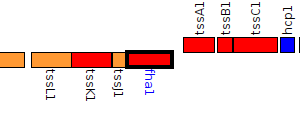
|
|
| Pseudomonas aeruginosa PAO1 (Stover et al., 2000) | PA1665 |
Fha2
fha2 |
2 same-strain members: PA0081 PA1665 |

|
|
| Pseudomonas aeruginosa UCBPP-PA14 (Lee et al., 2006) | PA14_00980 |
Fha1
fha1 |
2 same-strain members: PA14_00980 PA14_42950 |
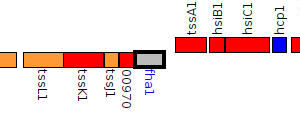
|
|
| Pseudomonas aeruginosa UCBPP-PA14 (Lee et al., 2006) | PA14_42950 |
Fha2
fha2 |
2 same-strain members: PA14_00980 PA14_42950 |
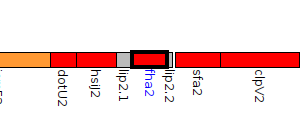
|
|
| Pseudomonas aeruginosa PA7 | PSPA7_0152 |
hypothetical protein
|
2 same-strain members: PSPA7_0152 PSPA7_3607 |

|
|
| Pseudomonas aeruginosa PA7 | PSPA7_3607 |
hypothetical protein
|
2 same-strain members: PSPA7_0152 PSPA7_3607 |

|
|
| Pseudomonas syringae pv. tomato DC3000 (Buell et al., 2003) | PSPTO_5422 |
FHA domain-containing protein
|
1 member |
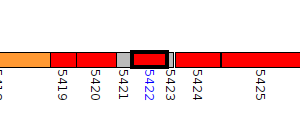
|
|
| Pseudomonas fluorescens SBW25 | PFLU6017 |
hypothetical protein
|
1 member |
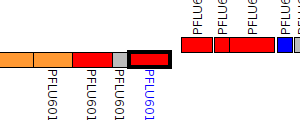
|
|
| Pseudomonas aeruginosa LESB58 | PALES_00821 |
hypothetical protein
|
2 same-strain members: PALES_00821 PALES_36621 |
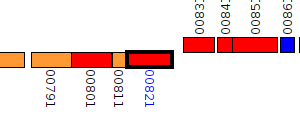
|
|
| Pseudomonas aeruginosa LESB58 | PALES_36621 |
hypothetical protein
|
2 same-strain members: PALES_00821 PALES_36621 |

|
|
| Pseudomonas protegens Pf-5 | PFL_6085 |
type VI secretion protein Fha
fha |
1 member |
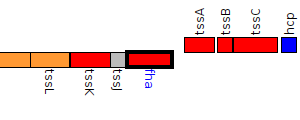
|
|
| Pseudomonas aeruginosa 19660 | Q010_04841 |
type VI secretion system FHA domain-containing protein
|
2 same-strain members: Q010_02848 Q010_04841 |
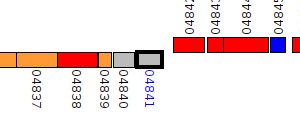
|
|
| Pseudomonas aeruginosa 19660 | Q010_02848 |
type VI secretion system FHA domain-containing protein
|
2 same-strain members: Q010_02848 Q010_04841 |
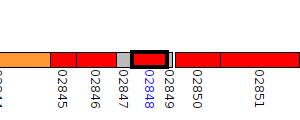
|
|
| Pseudomonas aeruginosa 19BR | IAI_RS0100455 |
signal peptide protein
|
2 same-strain members: IAI_RS0100455 IAI_RS0108620 |
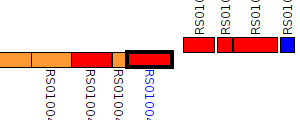
|
|
| Pseudomonas aeruginosa 19BR | IAI_RS0108620 |
signal peptide protein
|
2 same-strain members: IAI_RS0100455 IAI_RS0108620 |
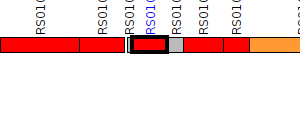
|
|
| Pseudomonas aeruginosa 213BR | IAK_RS0100460 |
signal peptide protein
|
2 same-strain members: IAK_RS0100460 IAK_RS0108885 |

|
|
| Pseudomonas aeruginosa 213BR | IAK_RS0108885 |
signal peptide protein
|
2 same-strain members: IAK_RS0100460 IAK_RS0108885 |
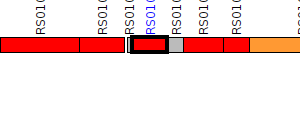
|
|
| Pseudomonas aeruginosa 2192 | PA2G_00646 |
signal peptide protein
|
2 same-strain members: PA2G_00646 PA2G_03993 |

|
|
| Pseudomonas aeruginosa 2192 | PA2G_03993 |
signal peptide protein
|
2 same-strain members: PA2G_00646 PA2G_03993 |

|
|
| Pseudomonas aeruginosa 3573 | AJ60_01658 |
signal peptide protein
|
2 same-strain members: AJ60_01658 AJ60_05240 |

|